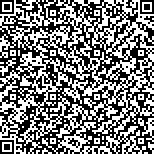| 引用本文: | 潘 洋,张立斌,张 涛,王平川,潘恒倩,班绍君,毕可智.动物性饵料对脉红螺(Rapana venosa)幼体的吸引性研究.海洋与湖沼,2013,44(6):1578-1583. |
| |
|
| 摘要: |
| 采用生态学方法进行了新鲜和煮熟的动物性饵料对脉红螺(Rapana venosa)浮游幼体的吸引作用研究。结果表明, 脉红螺浮游幼体在4螺层期是食性转换期, 且在幼体到达3螺层后期的第1—6天是投放附着基和动物性饵料的最佳时期。此外, 新鲜和熟的双壳贝类肉对脉红螺幼体有明显的吸引力, 吸附于新鲜贝肉上的4螺层幼体占吸附幼体总数的48.61%, 显著大于其它螺层幼体; 脉红螺幼体选择新鲜紫贻贝肉的比例为33.75%, 显著大于菲律宾蛤仔(24.08%)、中国蛤蜊(18.97%)和长牡蛎(23.19%); 而熟贝肉中, 长牡蛎对幼体的吸引作用显著大于紫贻贝、菲律宾蛤仔、中国蛤蜊、海湾扇贝边粉和空白对照; 新鲜紫贻贝和熟长牡蛎肉具有作为脉红螺幼体食性转换期动物性饵料的开发潜力。 |
| 关键词: 脉红螺 浮游幼体 动物性饵料 吸引性 |
| DOI:10.11693/hyhz201306025 |
| 分类号: |
| 基金项目:“十二五”国家科技支撑计划课题资助, 2011BAD13B01 号, 2011BAD45B01 号; 国家自然科学基金项目资助, 31200280号。 |
附件 |
|
| ATTRACTION OF ANIMAL DIETS TO THE LARVAE OF RAPANA VENOSA |
|
PAN Yang1,2, ZHANG Li-Bin1, ZHANG Tao1, WANG Ping-Chuan3, PAN Heng-Qian4, BAN Shao-Jun1,2, BI Ke-Zhi5
|
|
1.Key Laboratory of Marine Ecology and Environmental Sciences, Institute of Oceanology, Chinese Academy of Sciences;2.University of Chinese Academy of Sciences;3.Qingdao Agricultural University;4.Ocean University of China;5.Rongcheng Green Food Office
|
| Abstract: |
| We studied the attraction of fresh and boiled shellfish tissues to planktonic larvae of Rapana venosa. The
diet transition occurred in the four-spiral whorls stage of R. venosa. The opportune moment to release adhesive substratums
and animal feeds is during a period from the 1st to 6th day after larvae developing to late three-spiral whorls stage (cultured in 25℃). The results show that (1) both fresh and boiled shellfish tissues attracted the larvae; (2) the ratio of
four-spiral whorls stage larvae on fresh shellfish tissues was significantly higher than that of the larvae in other spiral
whorls stages; (3) the ratio of larvae for fresh Mytilus eduliswas 33.75%, which is significantly higher than those of other
shellfish diets; (4) in regard to boiled shellfish tissues, attraction to the larvae from Crassostrea gigaswas greater than
from M. edulis,Ruditapes philippinarum,Mactra chinensis, skirt powders of Argopecten irradians, and the control group.
These findings suggest that fresh M. edulisand boiled C. gigastissues are potential animal feeds during the diet transition
phase for R. venosalarvae. |
| Key words: Rapana venosa planktonic larvae animal feed attractive force |
